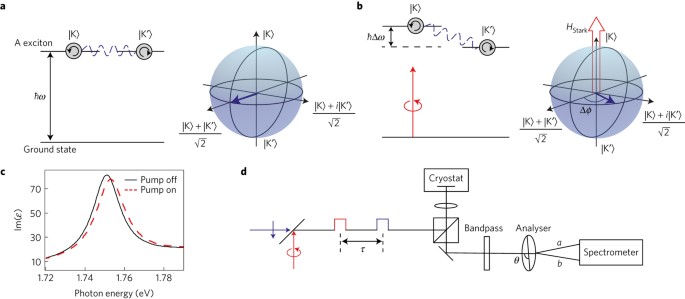
Optical manipulation of valley pseudospin
- Select a language for the TTS:
- UK English Female
- UK English Male
- US English Female
- US English Male
- Australian Female
- Australian Male
- Language selected: (auto detect) - EN
Play all audios:
The coherent manipulation of spin and pseudospin underlies existing and emerging quantum technologies, including quantum communication and quantum computation1,2. Valley polarization,
associated with the occupancy of degenerate, but quantum mechanically distinct valleys in momentum space, closely resembles spin polarization and has been proposed as a pseudospin carrier
for the future quantum electronics3,4. Valley exciton polarization has been created in the transition metal dichalcogenide monolayers using excitation by circularly polarized light and has
been detected both optically5,6,7 and electrically8. In addition, the existence of coherence in the valley pseudospin has been identified experimentally9. The manipulation of such valley
coherence has, however, remained out of reach. Here we demonstrate all-optical control of the valley coherence by means of the pseudomagnetic field associated with the optical Stark effect.
Using below-bandgap circularly polarized light, we rotate the valley exciton pseudospin in monolayer WSe2 on the femtosecond timescale. Both the direction and speed of the rotation can be
manipulated optically by tuning the dynamic phase of excitons in opposite valleys. This study unveils the possibility of generation, manipulation, and detection of the valley pseudospin by
coupling to photons.
The authors would like to acknowledge technical assistance from X. X. Zhang and S. K. Kim. This work was supported by the Department of Energy, Office of Science, Basic Energy Sciences,
Materials Sciences and Engineering Division, under Contract DE-AC02-76SF00515 and by the W. M. Keck Foundation and the Gordon and Betty Moore Foundation’s EPiQS Initiative through Grant No.
GBMF4545 (T.F.H.).
Ziliang Ye and Dezheng Sun: These authors contributed equally to this work.
Departments of Applied Physics and Photon Science, Stanford University, 348 Via Pueblo Mall, Stanford, California 94305, USA
SLAC National Accelerator Laboratory, 2575 Sand Hill Road, Menlo Park, California 94025, USA
Z.Y. and T.F.H. conceived the project. Z.Y. and D.S. performed the experiment. Z.Y., D.S. and T.F.H. analysed the data, developed the model, and wrote the manuscript together.
Anyone you share the following link with will be able to read this content: